Update #4, Tuesday, March 16, 09:30 EST
TAKEAWAY: Anyone who wishes to reminisce or to discover the Havana of the 1950s and early 60s only needs to turn to the works of that best of Cuban writers, the late Guillermo Cabrera Infante, who died in 2006. Now, a new novel by him is published post-humously, Cuerpos Divinos (Divine Bodies), and it is yet another postcard of the city of my childhood. I remember it well, including Cabrera Infante’s widow, the actress Miriam Gomez, with whom I acted in a long running play in Havana. AND: Images from my iPad sketches PLUS: Romania Libera one day after: some talk about “pill box” logos
Cabrera Infante: another love letter to his Havana

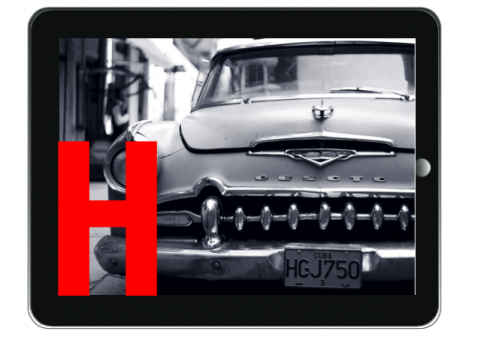
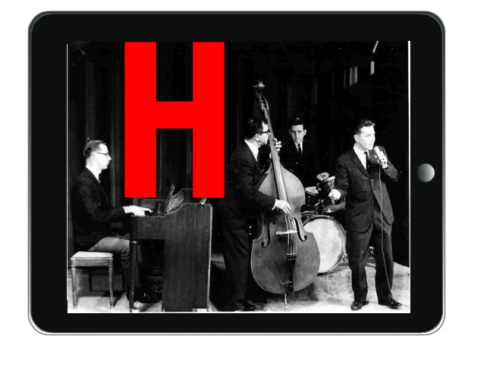
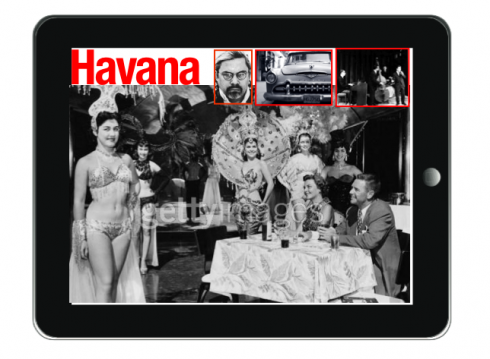
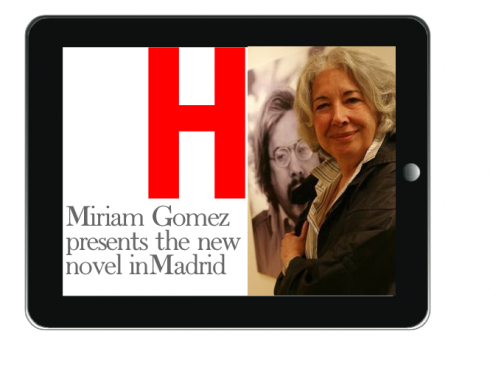
The first time I read a novel by Guillermo Cabrera Infante, Tres Tristes Tigres (Three Sad Tigers), it was as if the author had sent me a personal postcard that transported me to that city by the sea, with the narrow streets that led to the corner bar with open windows, where a pretty dark haired bartender served beer and little glasses with oysters and tomato sauce, or to the colonial building with the bird cage hanging from a third floor balcony. Along the way, the peanut vendor offering roasted peanuts (my favorite ones were the ‘garapiñados”, honey roasted). And music, music,music.
My memories of the Havana of my childhood come wrapped in the sounds of boleros, congas, cha cha chas. I have always wondered why music spilled into the streets of Havana like a never ending cascade.
Anyway, this week I read that the late Cabrera Infante, who died in exile in London, in 2006, at the age of 76, apparently left me and his fans another “postcard”, now published post humously in Madrid.
Titled “Cuerpos Divinos” (Divine Bodies), this new novel takes place in the Havana of the early 60s, and, according to El Pais of Madrid (March 12, 2010 edition), it is a sort of map of the Havana of the period, part autobiography, a combination of what Cabrera Infante “lived and what he dreamed”. Like any work of fiction written by a Cuban exile, this novel travels along the path of melancholy—-the longing for what was.
Coincidentally, the new novel was presented in Madrid this week by Cabrera Infante’s widow, the former Cuban actress Miriam Gomez, with whom I was honored to share the stage in Havana.
Acting with Miriam
The appearance of Miriam Gomez adds a personal note for me.
Miriam and I were part of the cast of “Antigone” at Teatro Arlequin of Havana in 1961. I was the page who followed her and King Creon (played by Cecilio Noble). The play was directed by Ruben Vigon.
It is amazing that I can remember all of this, which happened 50 years ago, when I was 13. Perhaps it is because I still have a dozen photos of my scenes with these actors (my mother was wise to hide all those acting pictures at the bottom of her suitcase when she left Cuba in 1963).
However, I remember Cabrera Infante coming to see Miriam play. She was terrific in Antigone, and garnished fantastic reviews. He adored her. They were married and shared 40 years together. At the presentation of his book, Miriam referred to him as “my guardian angel”.
In introducing the novel, Miriam Gomez said that it is “pure dynamite” and can be read ” sexually, politically and Hemingwayscally”, referring to a passage in the novel about the great American novelist, Ernest Hemingway, and his life in Havana, where he kept a home.
Miriam was at the height of her career as a theatrical actress of consequence when the revolution came. She and Cabrera Infante went into exile in London, where she still resides. Another example of a career—-and a host of dreams—-that were shattered by the Cuban revolution that is still there.
Taking Antigone on the road,
For whatever reasons, the new Cabrera Infante novel, the presence of Miriam Gomez introducing it to the world, the thought of the Havana of the 1950s and early 60s: it all takes me back, and I am surprised as to how vivid those memories are.
I was going to be an actor.
I did not have a care in the world.
Life was good, sweet and I was already acting in the theater, which I was discovering was the real thing, as opposed to TV soap operas and all those commercials for soft drinks, ice cream and fruit juices. I remember telling my casting agent that I was more interested in doing theater than any of the rest.
In theater, you have a chance to improve your performance all the time. The lessons I learned on the stage still follow me. Actors tend to see life in terms of the specific performance, every bit of dialog, each scene, an opportunity to shine, to make it better. In a sense, that is how I see life: a series of opportunities that one must take advantage of, one at a time.
As a child actor, I also had to worry about attending school, so I would be doing homework between scenes, backstage, often aided by a supporting actress in the cast, Lidya Diez, , a name I had not even recalled till this writing, and who played Antigone’s lady in waiting. Not only do I remember her name, but I remember that she and I would enter the stage together at the end of Act 1, she would be carrying a tray with a cup of tea and some bread for Antigone. Her first line would be: Here is a little bread and some tea for you, my little pigeon. (The precise wording in Spanish, a cue for me to say my next line: Aqui tienes un poco de té y unas rebanadas de pan, paloma mía). Why do we remember such things?
(The tea was basically apple juice, which Miss Gomez fancied, and the bread sticks were pieces of wood, with which I usually played backstage and then put them back on a plate before our entrance onto the stage.)
That I could go from classical theater to basic Algebra to playing backstage with small pieces of wood—-all in a matter of minutes——taught me about multi tasking. Getting in and out of character was only one short deep breath away. Still is.
Then we took the very successfulAntigone on a national tour, to theaters all over the country, after it had a long run in Havana.
Good thing that was, as it allowed me to see the beautiful big theaters of the major cities of Cuba, before I left, never to return.
We would travel by bus, my mother always with me, and we would stay at the nice hotels (was I born to live in hotels?), then we would arrive, do a quick rehearsal to sort of get our spots on the “new” stage, and tour the cities: Cienfuegos, Camaguez, Santiago de Cuba. I remember them all, the Caribbean sea never too far, the breezes always inspiring you, and the beautiful young stars around.
Miriam, always reading, very quiet and preparing to transform herself into Antigone each night, not to mention the sultry and redheaded Veronica Lynn, who never abandoned her sunglasses—-a Cuban Greta Garbo in embryo, who stayed in Cuba, had an illustrious career in TV, theater and film, and now play grandmothers who walk with a cane.
My next theater performance, playing another page in Joan of Arc signaled the beginning of the end.
We were performing it one Sunday matinee at the beautiful, glass enclosed, Teatro de Bellas Artes in Havana, when a ship exploded in the nearby port, shattering all the windows of the theater as we were in the middle of the second act. I was on stage. There was heavy noise, screams, then silence.
That was my last play. There was never a third act.
When Guillermo Cabrera Infante died, his obit was a reminder that his Havana postcards to me were not coming again.
What great news now to know that he is sending yet one more postcard, this time from heaven, another reminder of that beautiful city of my childhood, full of lights and music, and the promise of what could have been.
Somehow, I get the feeling that the curtain has not yet come down on my story with Havana.
Perhaps there is still that third act waiting.
My daily iPad tutorial
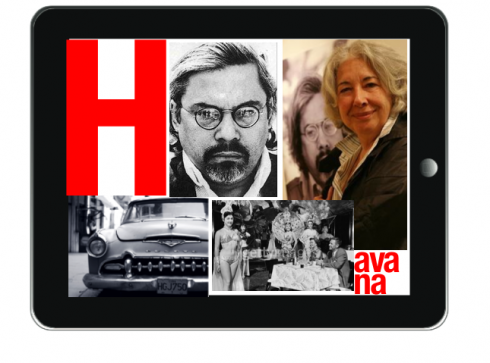
Yes, you are right, those images at the top are all inside an iPad screen.
It is part of what I call my daily iPad tutorial: I try to recreate a bit of storytelling everyday, sort of like a gymnastic exercise, using the iPad as my platform. It helps me to visualize stories beyond headline, text and photos.
For example, in today’s exercise (see some images above), I would have the H of Havana as an element you could click to advance the story, or to go from reading mode to audio (listen to some Cuban music of the 50s, or see a video straight from a Tropicana show of 1958, or ride a car down the famous Malecon to almost feel the breeze of the swaying royal Cuban palms).
Usually, a story appears during my workday that I try to get the team to IPadize (new verb?). How would we present this in the new medium? What components would the story have? What elements of the photos would be milked for details and mini stories?
The Havana story today was a good exercise, hope you enjoy it.
Call it the most exciting work ever in progress.
Romania Libera: Day 2 after launch of new design
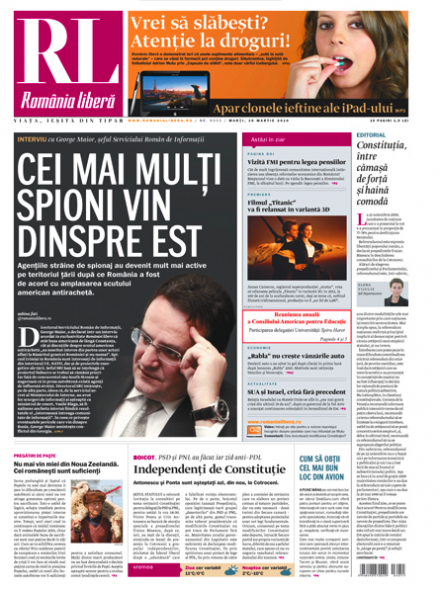
Front page of Tuesday’s Romania Libera
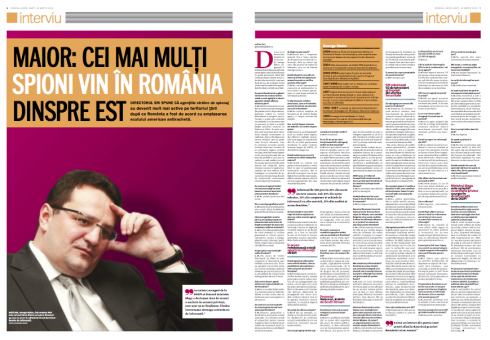
Double page exclusive interview in today’s Romania Libera
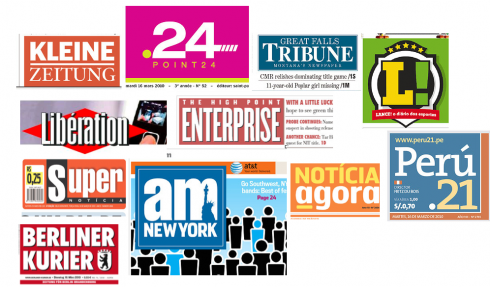
Pill box logos of newspapers around the world

Bild of Germany probably has the most memorable pill box of them all
It is the second day of RL’s new look, and reader reaction has been positive, but also from advertisers. The presence of the silent ad on the Page One navigator, a first for Romania, is already making advertisers stop to take a look. We hope the readers are doing the same.
It has gone smoothly as layouters and editors adapt to new systems, different storytelling strategies, and a new set of typographic and design rules.
The famous “pill box” logo
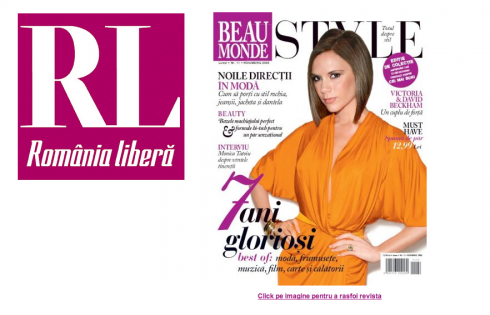
Reader questions the similarity of these logos: yes, of course, they are similar, so are two two-door cars made by different manufacturers. A pill box is a pill box is a pill box
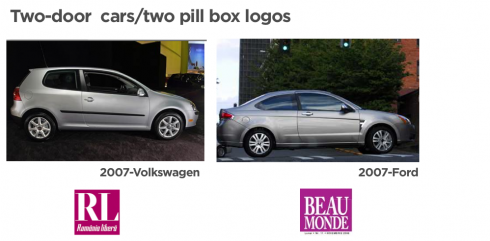
In every redesign project there is that one element that picks the interest of people——not the readers, mind you, but other editors and designers.
Here, it is the square logo for RL on Page One, a drastic and dramatic change from the red, spelled out Romania Libera logo that had been there for 133 years. Not one single comment from readers about this, although some of the young peoiple at the hotel where I stay see it as a younger brand, and tell me that Romania LIbera, to them, is tied to the past, to the newspaper their grandfather read during the Communist era, for example. Rebranding, then, a good thing.
One person wrote in the blog yesterday that our logo resembled that of Beau Monde, a fashion/beauty magazine here in Romania.
My answer: Yes, of course. IT is just like a two-door automobile from one brand may resemble another two-door car from another brand.
Pill box logos are popular in Europe and Latin America, although we find some in the US as well (see my sampling). They are a way of using the prime real estate of page one for additional navigational elements, as we do in the RL. But in our case, we wanted to brand the paper as RL, which is how many refer to it.
So,enjoy the sampling here.
Am I surprised that raeders have not said one beep about the pill box log, but that designers in the community do? Not at all. That is usually the case. It is good that we design these products for users, not for the design community!
New Ways to Present Information
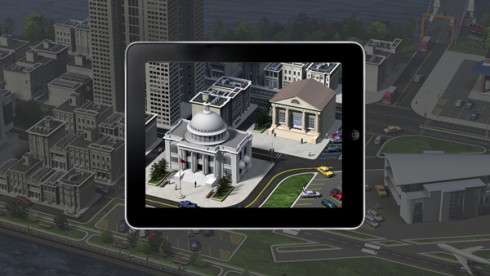
Joe Zeff writes in his blog
that “The iPad opens new frontiers for presenting information, with new tools for visual storytelling. Here is an illustration that Joe Zeff Design created for Unisys Corporation, before there was an iPad.”
Great illustrations and information everyone should be following!
Handelsblatt: new format, stitching and circulation goes up

Circulation is up, and stitching keeps the pages stay together, win win situation
This just in from the guys at Tolerans, in Sweden:
Handelsblatt, Germany’s leading financial daily, is the first quality daily newspaper in the country to switch to a tabloid format. The sleek new compact look is accentuated by stapling, delivered by stitching manufacturer Tolerans, which makes the finished result even more reader friendly.
Handelsblatt is the only German business newspaper to have reported growth in circulation numbers for the last quarter of 2009. “In Q4, we increased subscription sales by almost 7 % compared to Q3,” says Joachim Liebler, Managing Director at Handelsblatt. Single copy sales increased by 30 %.
We at Garcia Media appreciate this news, as we were deeply involved in Handelsblatt conversion to “business express” format and, as we do with all customers going tab, advised them to go for stitching, which keeps pages from falling, and, from creating ecological mess on buses, trains and airplanes. A paper that is stitched is read more orderly, and, when left behind, it creates less of an impact on the space of others.